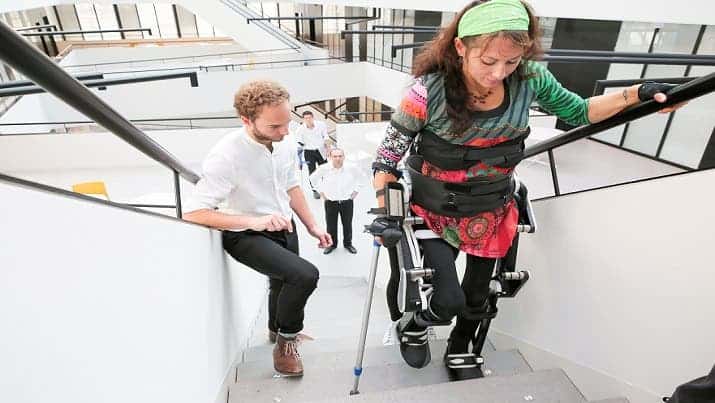I’ve said it before and I’ll say it again: the future is here.
Stand up, take a few steps, walk around, then sit back down. For most of us, those things are taken for granted. We can move around, we can use our bodies, it’s just something we do every day – without questioning or thinking about it. But for millions of people suffering from paraplegia, that’s virtually impossible. That may change in the future, thanks to technology.
Researchers working at the École polytechnique fédérale de Lausanne in Swtizerland have developed a novel exoskeleton called TWIICE. TWIICE squared off with other exoskeletons at the 2016 Cybathlon – the first competition for disabled athletes who use various assistive technologies. The device was built from light composite materials and weighs only 14 kilos – yet is able to support the user’s entire weight. It features buttons for fast walking, slow walking, climbing stairs and so on.
“Our goal is to make the vertical world accessible to handicapped people,” said Mohamed Bouri, a group leader at the LSRO and the project supervisor. “In several years, it will undoubtedly be common to see people in exoskeletons standing up and walking around outside or in stores.”
However, the project isn’t yet suitable for the general population. The exoskeleton is still pretty difficult to control and requires experience and great concentration.
“At this point, the pilot needs a lot of strength, stability and concentration to handle it, since each step is controlled manually,” said Jemina Fasola, a PhD student in bioengineering who was involved in the project.
The reason – or one of the reasons – why it’s so hard to maneuver is because the design is built to fit all body types.
“We came up with a very flexible production method,” said Tristan Vouga, a PhD student in microengineering and the person behind the concept. “It makes it easy to produce exoskeletons that can fit different body types and work with different handicaps.”
If they can get it to work easily, and this is a big if, we’re gonna be really close to real-life cyborgs, aiding the lives of millions of people.










